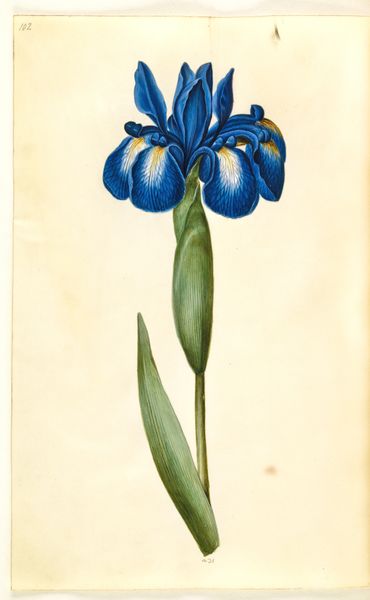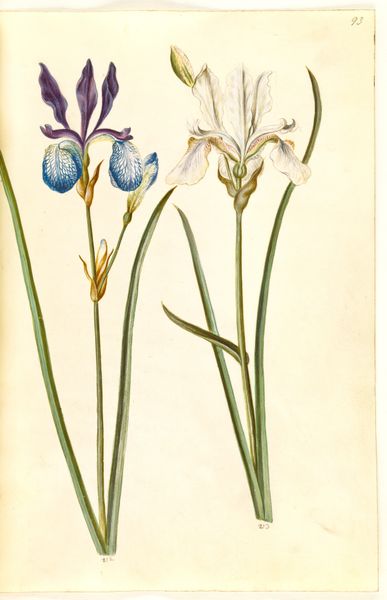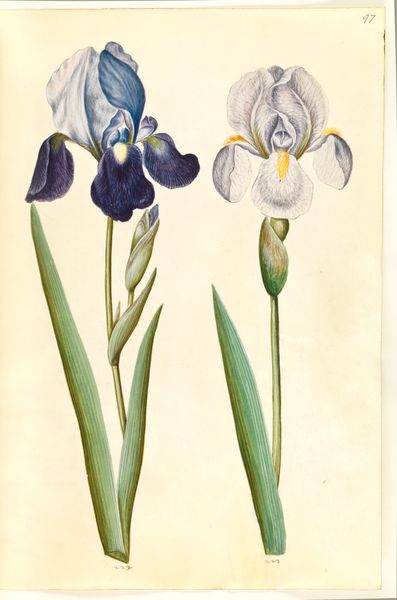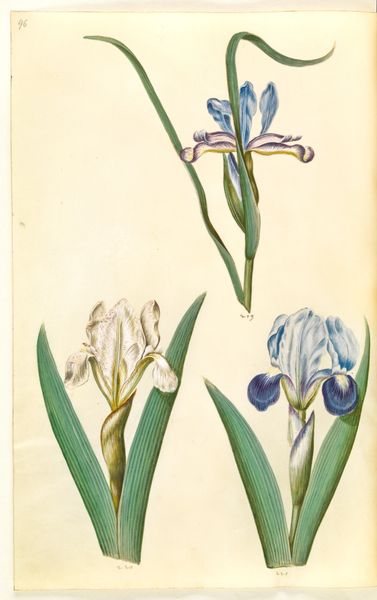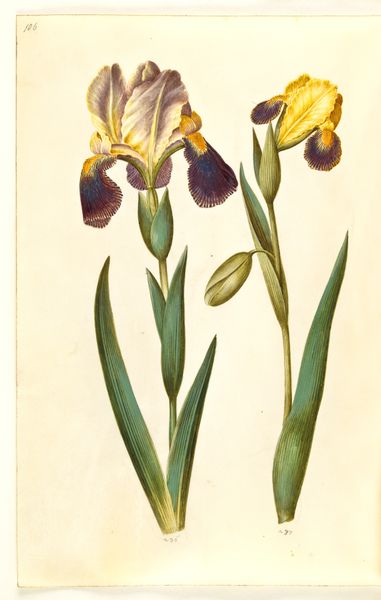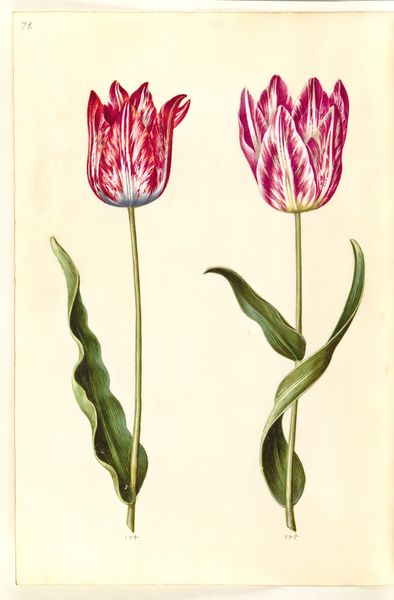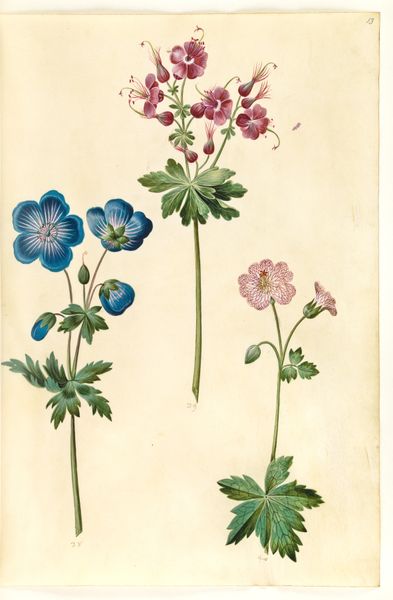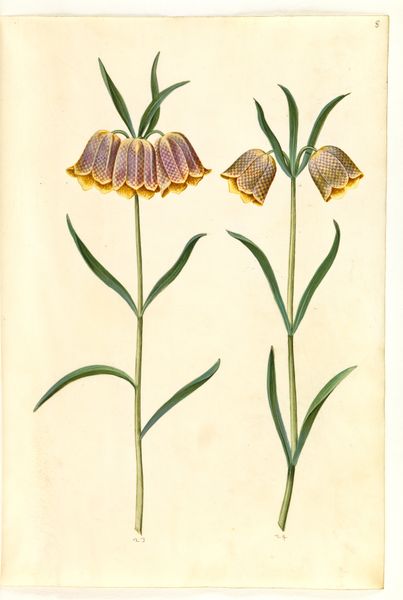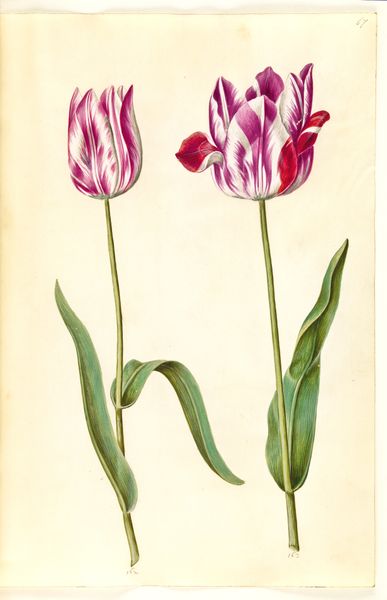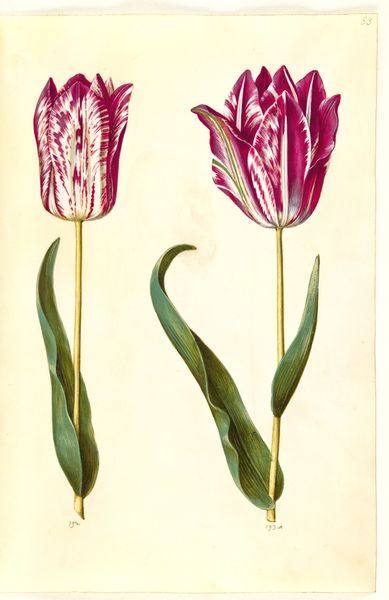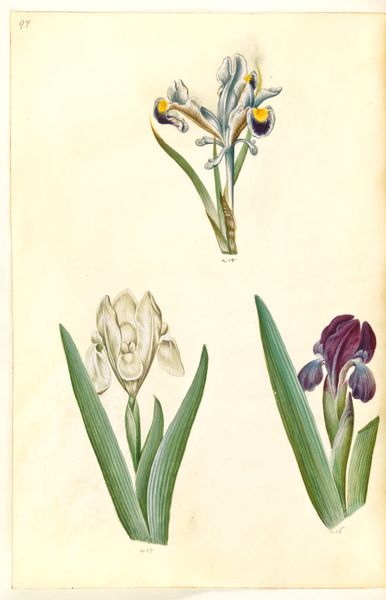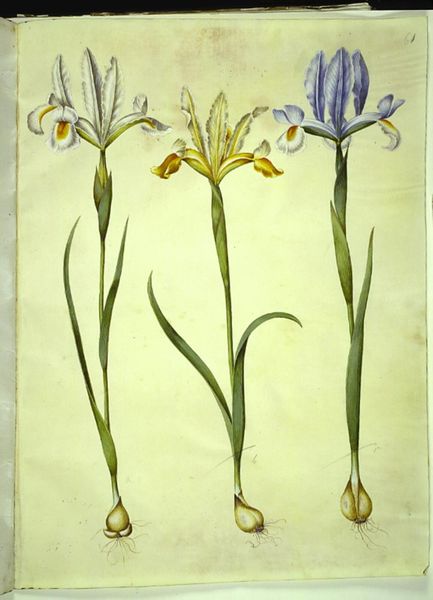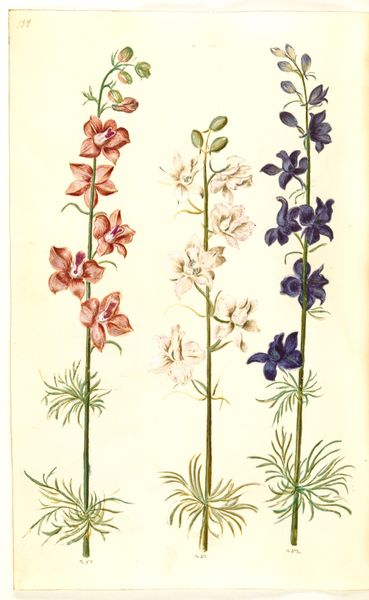
Iris sibirica (sibirisk iris); Iris latifolia (engelsk iris) 1635 - 1664
0:00
0:00
drawing, gouache, watercolor
#
drawing
#
gouache
#
landscape
#
11_renaissance
#
watercolor
#
watercolour illustration
#
botanical art
Dimensions: 375 mm (height) x 265 mm (width) x 85 mm (depth) (monteringsmaal), 358 mm (height) x 250 mm (width) (bladmaal)
Curator: Take a moment to observe this piece, "Iris sibirica (sibirisk iris); Iris latifolia (engelsk iris)", a watercolor and gouache drawing dating back to the period between 1635 and 1664, created by Hans Simon Holtzbecker. It’s currently housed here at the SMK. Editor: It’s incredibly delicate. Almost like looking into a faded dream. There’s a certain austerity to the presentation. Curator: Indeed. Holtzbecker's botanical illustrations were often commissioned for scientific or horticultural purposes. The Iris, throughout history, is rich in symbolism, particularly associated with royalty, faith, and even the Virgin Mary in some contexts. Do you see any specific cultural meanings suggested here? Editor: Immediately, the colors evoke notions of melancholy and introspection. The darker blues paired with stark whites lend a sense of purity but also isolation, like scientific specimens viewed objectively. Curator: Right. The meticulous detail of the veins in the petals serves a dual purpose: it's scientifically accurate, but it also visually reinforces the idea of structure and order in the natural world. What does this formalized presentation suggest in relation to societal constructs? Editor: Well, the Iris itself, even its botanical variants, carries pre-existing symbolic weight. When viewed within a 17th-century context, and through the lens of a white male gaze that defined and catalogued the world, it serves to reaffirm control and understanding of the natural world, reflecting existing societal hierarchies. Curator: Precisely. Consider how access to knowledge and the patronage systems during that period influenced whose perspectives were validated and immortalized through art. Editor: It’s almost a taxonomy presented artistically, which begs the question, how do we democratize these visual archives? How can marginalized voices reclaim ownership of botanical art that has, for so long, echoed a specific, privileged narrative? Curator: By interrogating the underlying power structures embedded within these seemingly neutral depictions and connecting them to broader dialogues around representation. I’m glad we have shared this fresh outlook today. Editor: I think understanding Holtzbecker's depiction through layers of cultural symbolism certainly makes us look at botanical illustration with a new perspective.
Comments
No comments
Be the first to comment and join the conversation on the ultimate creative platform.
